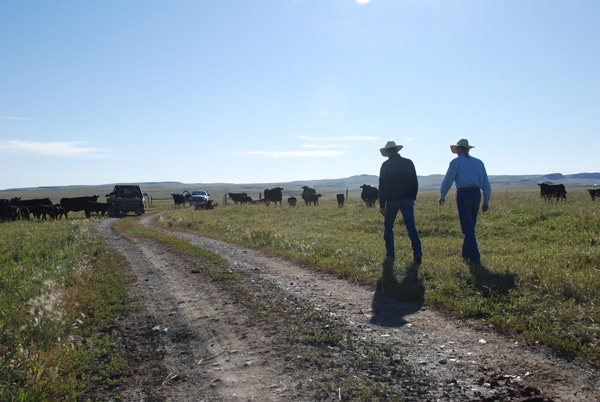Want good employees? Here’s how to create them
May 5, 2016

If you want good employees, you must become a good leader. Leadership is difficult to define; but it is some combination of mentoring, teaching, encouraging, engaging, rewarding, consideration, charisma, talent, vision, knowledge, observation, fairness, honesty, firmness, loyalty and a host of other things.
We cannot become a perfect leader in a lifetime, that is certainly too short. But we can (and must) continue to work at it. That list of characteristics above seems daunting; but, except for honesty, we don’t have to be perfect at them to become an excellent leader. Always remember, “Leadership is best gauged by the voluntary response of those being led.”
In the process of searching for and hiring a new employee (even your own child who seems anxious and ready to come back to the farm or ranch as a full-time employee) consider the following:
Don’t look for the perfect employee as you probably won’t be the perfect boss. List the skills and personality characteristics that you would hope to find. I would suggest that you look for work ethic, intellect, attitude and passion along with honesty and integrity. If you can find that, you can train the rest if you’re a good leader. Hire a good person. Finding farm and ranch skills are nice but not nearly as important as finding a good person.
Make sure the applicant understands the expectations of the position, to whom they will report, what the ranch vision is and the number of co-workers and their roles. I always did this verbally, but didn’t always provide it in writing—that was a mistake. Always write it out—too much detail is better than too little. It often happens that what you say and what the applicant hears are two different things. Neither party is at fault—just not perfect communication; and we always forget to favor our own wishes.
When you have selected and hired in such a way as to avoid surprises for the new employee, you need to:
Orient the new employee and his/her family to the community. They need to know how to find services such as schools, banks, doctors and hospital, stores, churches, recreation especially for kids, etc. Help them feel comfortable in their new community. This is a simple step that is too often ignored. An unsettled family will soon result in an unhappy employee.
Orient the employee to the job environment. Review the job description that was presented in the job interview. Then introduce the new hire to his/her co-workers and your family. Review what each person does, when you have planning meetings and how you communicate on the day-to-day work plan. Help people feel as comfortable as possible as quickly as possible.
Provide adequate training for each job or task. If you are a truly good rancher and trying to be better, you are not doing things the same way as the neighbors or the previous employer. It is unfair to expect a new employee to “see what needs to be done” and “know how to do it.” That can be a fair expectation with training and time but will vary from one employee to another depending on the quality of their previous experience, the quality of your teaching and training and the employee’s ability to grasp a new skill or change old habits. Remember, if you are truly good, you will be changing some of your own habits too.
No two people learn or adapt to a new system at the same rate of speed. As your new co-worker (employee) demonstrates competence in meeting expectations, you can give more autonomy and less supervision little by little. When someone can do something well, let them do it. It frees up more of your time, and they are going to feel more like part of a team. Engage them in idea generation and planning as much as possible.
Provide opportunities to learn, grow and succeed. I wanted each full-time employee to have a significant learning experience every year. It could be a grazing school, animal handling short course or other event. At times, we brought experts to the ranch to teach our people, but most often we sent our people to events sponsored by others. We expected our people to come back to the ranch and teach what they had learned to the rest of us. It is amazing how much more effective the learning is when you know that you are expected to teach it.
Remember, you cannot empower anyone. However, as a trusted leader you can encourage, facilitate and reward empowerment. The best reward for someone’s becoming more empowered is responsibility and acceptance as a team member. Ask yourself this question: “If I were an employee, would I rather be a robotic extension of the boss or a valued member of a team with a shared vision whose ideas are listened to and blended with the ideas of other team members to build a better future?”
A good employee is more likely to stay with an operation that is progressing and growing than one that simply maintains the status quo. There is something invigorating about progress and improvement.
To be trusted, you must be trustworthy. If your employee notices any dishonesty in you, it will be very difficult to regain his/her trust.
You might also like:
How to control sucking & biting lice on cattle
When is the best time to wean? It might be younger than you think
Late-gestation trace mineral supplementation shows promise
7 tips for limiting the spread of invasive species in your pastures
About the Author(s)
You May Also Like



